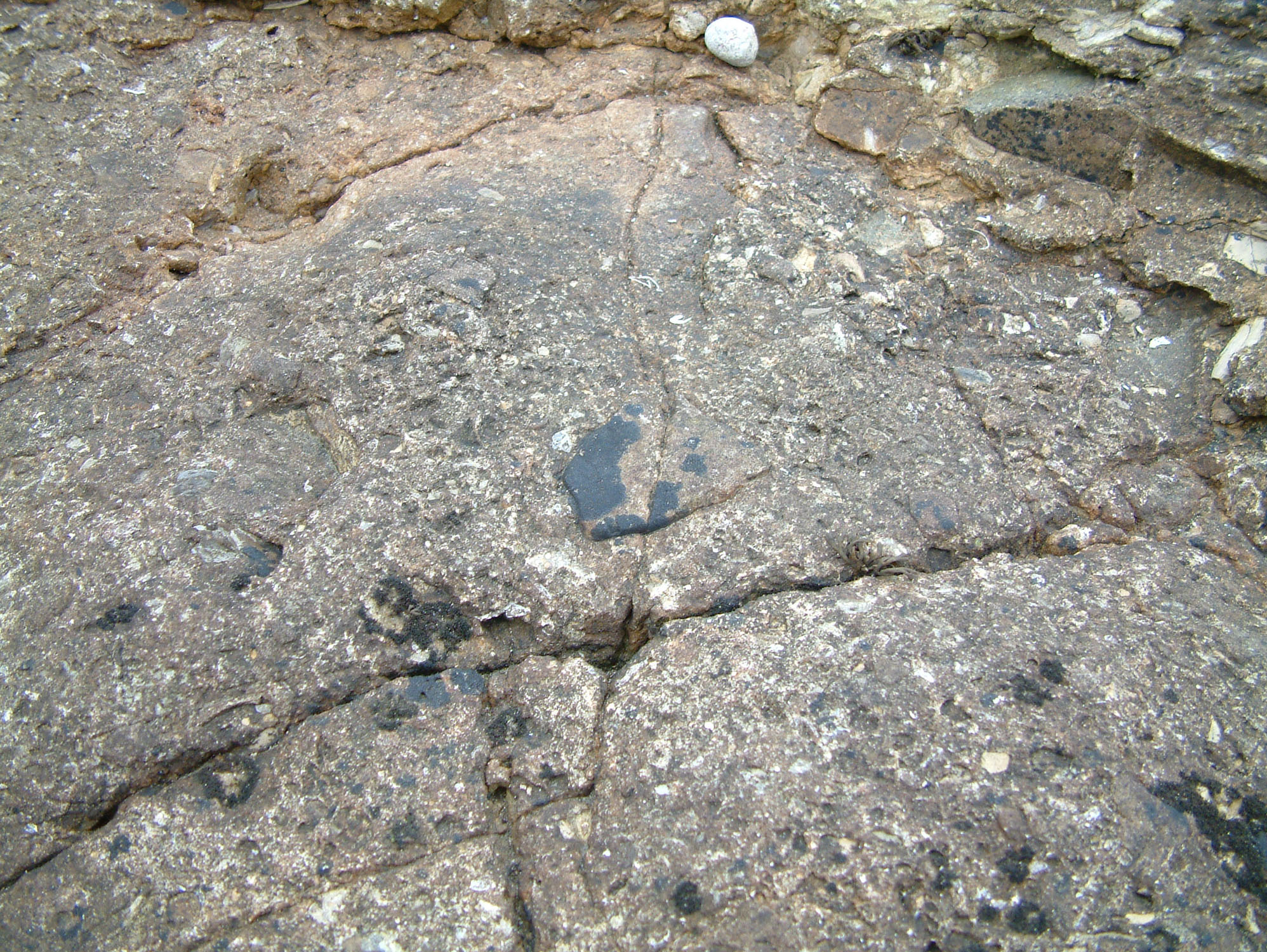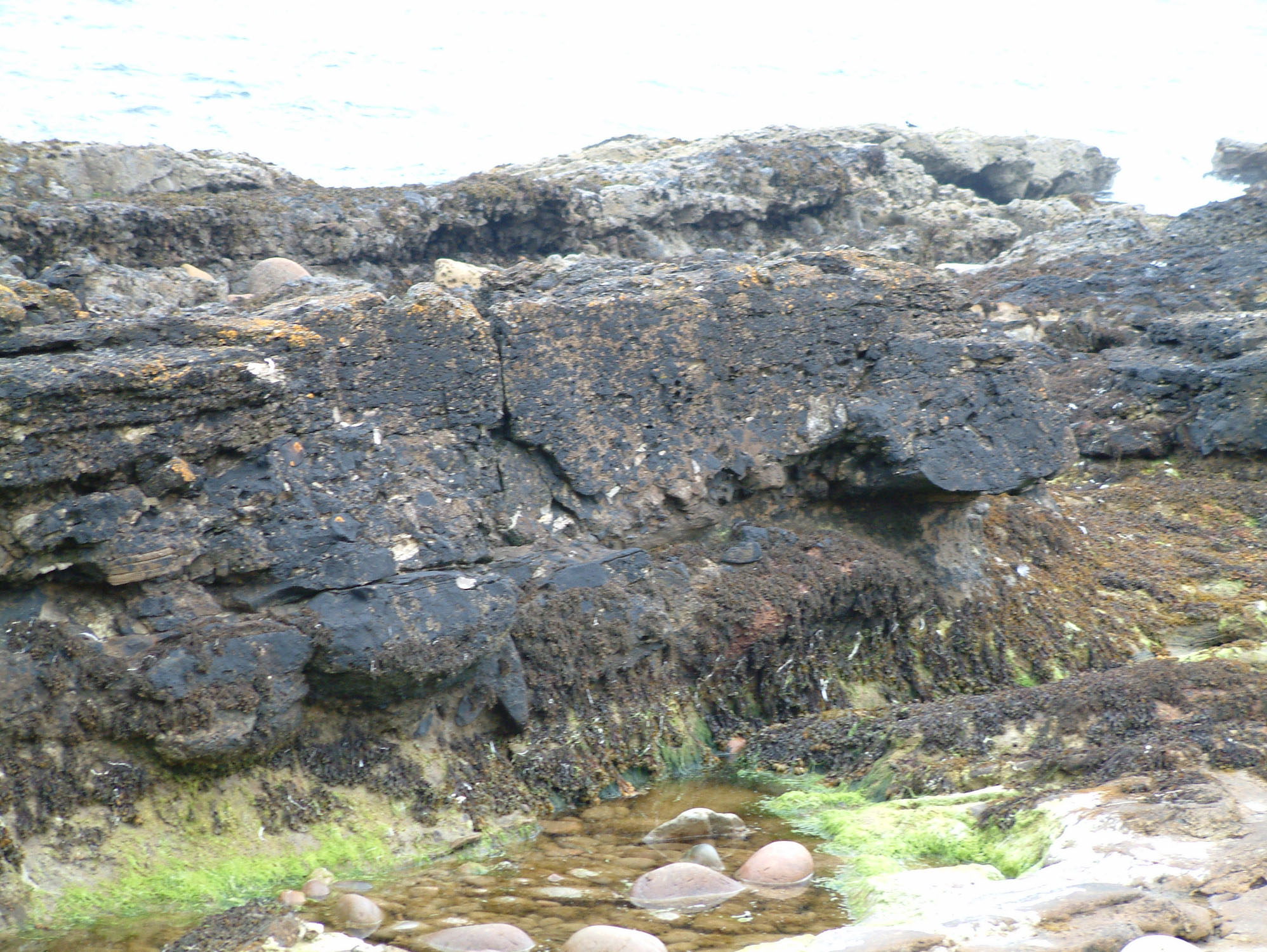What looks like an ordinary rocky beach, covered in seaweed, is actually rich in corals, ammonites and shells, although you need to work hard to find them. At Portgower, the rocks exposed are from the Jurassic and, if you split them, can yield flat ammonites and shells.
DIRECTIONS
♦ Follow the A9 towards Helmsdale. You will pass through a small village called ‘Portgower’ at the bottom of a hill, where you will see the foreshore on which many rocks are exposed.
♦ Find suitable parking nearby (as there are no car parks) and head down to the foreshore
♦ Ref: 58.09350°N, 3.69080°W
PROFILE INFO
FIND FREQUENCY: ♦♦♦ – Corals are quite common here, but they are poorly preserved. You have to look for them in sandy deposits. Ammonites and shells can also be found, but seaweed makes collecting difficult.
CHILDREN: ♦♦♦ – Portgower is suitable for families, although the fossils are poorly preserved. This location is not recommended for beginners.
ACCESS: ♦♦♦ – This location is easy to find, being just before Helmsdale. However, there is no official car parking. The walk is also quite difficult, over a rocky foreshore.
TYPE: – There are no cliffs at Portgower. All of the fossils come from shales, which are exposed during scouring conditions.
FOSSIL HUNTING
Within the sandy deposits between layers in the ‘Boulder Beds’, a number of corals can be collected. Flat ammonites are also quite common, but all fossils are poorly preserved and are very fragile, so you should ensure that you wrap your specimens well and preserve them when you get home.
The foreshore is very rocky and, from first appearance, looks completely covered by seaweed. However, it is in the Boulder Beds where you will find fossils. Look for sandy deposits in between layers of shale and harder limestone. It is best to take a pick and clear away the surface rocks to uncover the deposits below. Only certain zones contain fossils, but once the right zone is found, you will find many specimens.

GEOLOGY
At Portgower, various outcrops of ‘Boulder Beds’ can be seen, similar to those of Helmsdale. However, unlike Helmsdale, corals are found within sandy deposits between layers.
The Kimmeridgian outcrop, up to a kilometre wide, displays a complex array of boulder beds Inter-digitating with dark mudstones, siltstones and sandstones.


SAFETY
Common sense when collecting at all locations should always be used and prior knowledge of tide times is essential. Care should be taken on the foreshore, as this can be very slippery.
EQUIPMENT
The ‘Boulder Beds’ contain sandy deposits, which yield corals. To get to these layers, you may have to split hard shale beds, using a splitting hammer. Sometimes fossils can also be found in harder limestones, which will require chisels and safety goggles.
ACCESS RIGHTS
This site is an SSSI. This Special Site of Scientific Interest, means you can visit the site, but hammering the bedrock is not permitted.
 Scotland’s fossil resource is at risk of abuse and damage, and so we must all safeguard and managed fossil collecting to ensure its survival for future generations. For this reason it is VITAL you read and adhere to the Scottish Fossil Code for ALL sites in Scotland.
Scotland’s fossil resource is at risk of abuse and damage, and so we must all safeguard and managed fossil collecting to ensure its survival for future generations. For this reason it is VITAL you read and adhere to the Scottish Fossil Code for ALL sites in Scotland.
It is important to follow our ‘Code of Conduct’ when collecting fossils or visiting any site. Please also read our ‘Terms and Conditions‘
LINKS
♦ Buy Fossils, Crystals, Tools
♦ Location Discussions
♦ Deposits Magazine
♦ Join Fossil Hunts
♦ UK Fossils Network




















